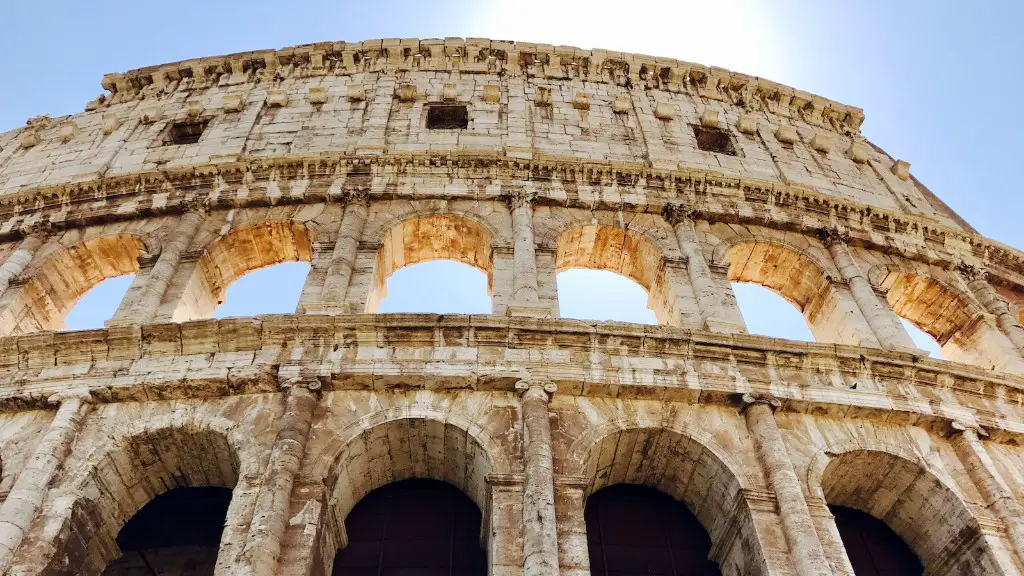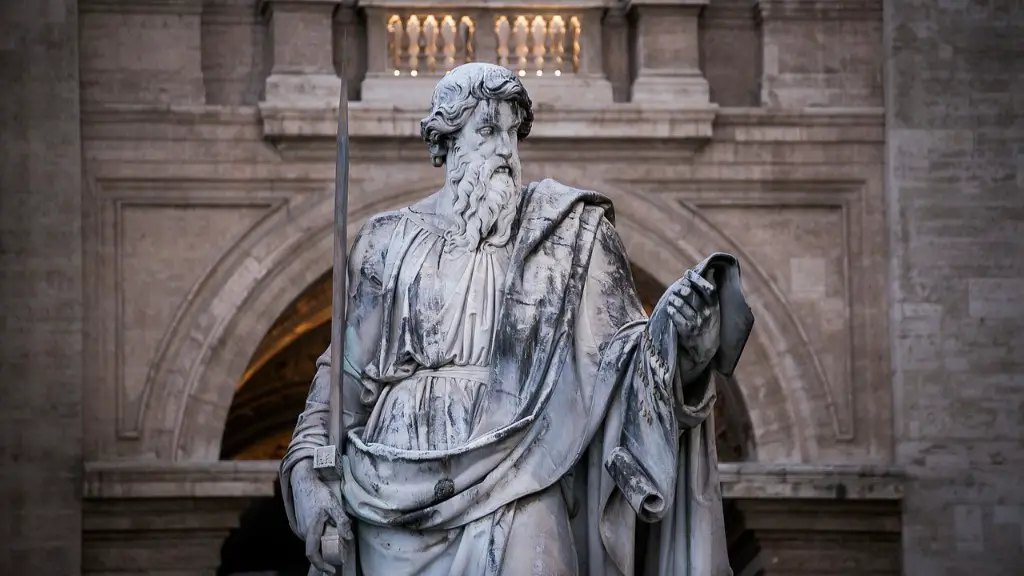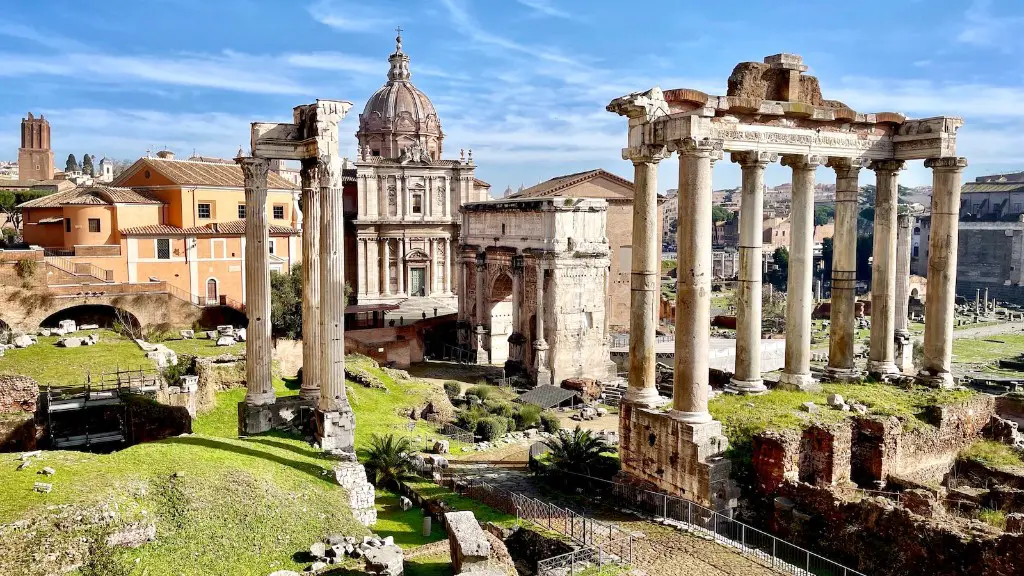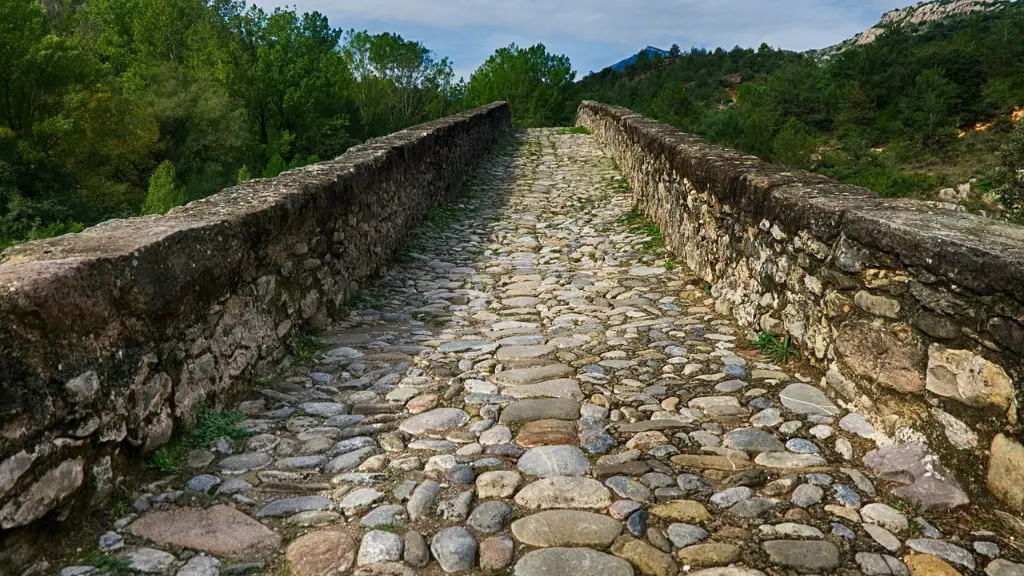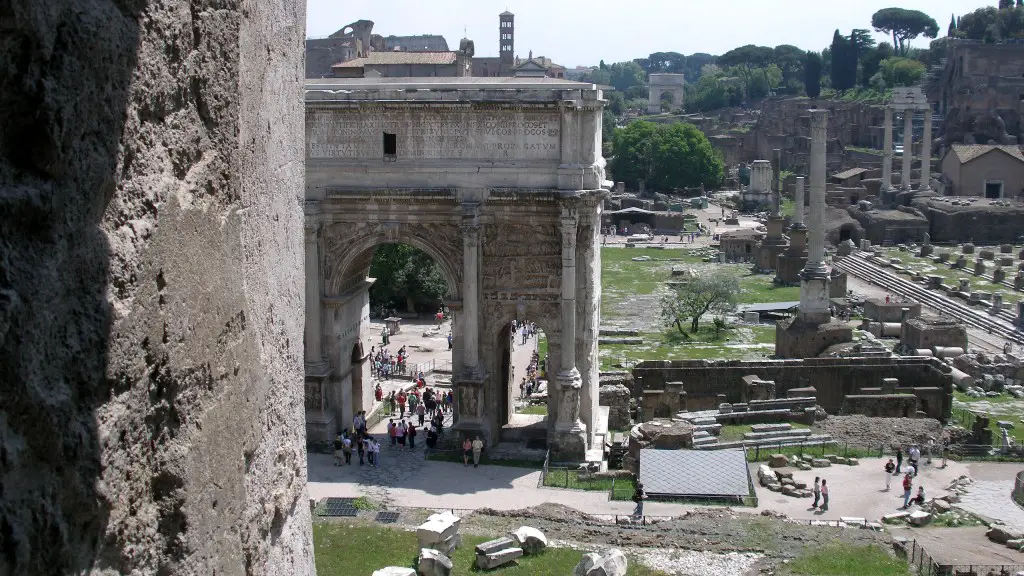The daily life of ancient Rome was filled with excitement and intrigue, as well as strict rules, regulations and expectations. Ancient Rome was considered a superpower of its time, and it was seen as a centre of culture, art, architecture, learning and literature. Throughout its long and interesting history, Rome had a major impact on the development of western civilisation, which many consider to be the foundation of the modern world.
Perhaps the most important aspect to understanding the daily lives of ancient Romans was the concept of citizen rights, which was largely absent in other societies of the time. Roman citizens had the right to vote, access education, and preach certain types of religion. Roman citizens could also own land and attribute to public works. Although these rights were not consistent among all citizens, it certainly gave Roman citizens a sense of belonging and encouraged them to participate in public activities.
Ancient Roman life was also inherently hierarchical, with the emperor and nobility at the top of the social ladder, followed by wealthy merchants and artisans, religion professionals and various other professionals, and then at the bottom, the lower class proletariat. This hierarchy was backed up by strict laws and punishments, which made sure that those at the top of the ladder stayed there. Of course, this sort of system wasn’t democratic and meant that poverty and inequality were rife.
Rome was also a society of religion and ideology. Ancient Roman religion was polytheistic, consisting of numerous gods and goddesses. The most prominent among these was the triad of Jupiter, Juno and Minerva. Religion was strongly linked to the state, with the emperor himself claiming divine links, which cemented his power and commanded worship and obedience from Roman citizens.
The Roman economy was also key to understanding life in ancient Rome. This was mainly an agrarian economy, with a focus on farming and livestock. Rome was also known for its trade, which involved the import and export of various goods. This, combined with a strong taxation system, enabled Rome to amass vast wealth and dominate the Mediterranean.
A major part of daily life in ancient Rome was entertainment and leisure activities. Public spectacles such as gladiatorial fights, chariot races and wild animal hunts were held in public arenas, in order to distract and entertain the masses. Other forms of entertainment were theatricals and chariot races, with music and dancing being popular leisure activities.
When considering the daily life of ancient Rome, it should also be noted that life expectancy was fairly short in comparison to other societies. This was due to poor sanitation and a lack of medical knowledge, meaning that illnesses and diseases were rampant. Life expectancy was also short due to the high level of warfare, political turmoil, and the prevalence of crime and slavery.
Education in Rome
Throughout the Roman Republic and the early years of the Roman Empire, education was reserved largely for the wealthy classes. This was because education was expensive and often based on private tutoring, which was out of the reach of poorer citizens. Education was also strongly focused on teaching traditional skills and trades, such as reading, writing, and arithmetic, as well as rhetoric and law.
Schools were also established during this period, but they were still reserved largely for the upper classes. Wealthier citizens would send their children to study in a school run by slaves, with the children of poorer citizens often being excluded. Education was also heavily influenced by religion, with students being taught the Ancient Greek myths, who then had to perform recitations and enact stories in order to demonstrate their learning.
Education in ancient Rome was also heavily focused on preparing young people for the military. Boys were taught the art of combat and rhetoric, as well as loyalty to the state. Girls were not included in this type of education, but rather were only taught the basics of reading, writing and arithmetic.
Although education was restricted in ancient Rome, it was still an important part of daily life. Education provided an opportunity for social status and advancement, and was seen as an important part of becoming a successful member of society. This system of education, although limited and biased, provided the foundation for our modern education system.
Women and Gender Roles
Ancient Rome was a patriarchal society and women were not granted the same rights and privileges as men. Women were expected to stay home and tend to domestic duties, while men would go out and engage in commercial and political activities. Women had few rights and could not own property or vote. Women also could not divorce their husbands, as this was seen as shameful.
However, it is worth noting that women in Rome did enjoy a certain amount of freedom and power, particularly those from wealthy and influential families. Women from these families enjoyed certain privileges and could even gain public office. While women had to obey certain social rules, they did still have the ability to gain power and influence by using their own skills and intelligence.
Marriage was also a key part of the daily life of ancient Romans. Marriages were arranged, and once contracted, were considered binding for life. It was also expected that women would remain loyal to their husbands and not engage in any extramarital affairs.
In conclusion, while men and women did have different roles in the ancient Roman society, women had the opportunity to use their own skills and influence to gain power.
Family Life
Family life was an important aspect of daily life in ancient Rome. Roman families were seen as the cornerstone of society, and it was believed that if the family unit was strong, then the state would be strong. Families lived in close proximity to each other and it was expected that every family member would contribute to the running of the household.
Family life was also heavily influenced by Roman law, which enforced several restrictions. These laws included marriage laws, inheritance laws and laws which allowed for the adoption of children. It was also expected that family members would show kindness and respect for each other, with disobedience seen as a sure way to breach familial ties.
Family life was also strongly linked to religion in ancient Rome. Religion was an integral part of daily life and was thought to bring together families and bind them together. Ancient Roman families would often observe religious rituals and festivals. They also took part in religious sacrifices, funerals and other ceremonies.
Lastly, it is worth noting that families were also very influential in the political life of Rome. Families could have influence on who was chosen for public office, and could even influence the outcomes of certain political events. This meant that families had a great deal of power in the way that Rome was run.
Social Life
Social life in ancient Rome was vibrant and diverse. People would gather in public spaces, such as theatres, forums and coliseums, to take part in public spectacles and the latest gossip. Columns and monuments were regularly erected to celebrate the accomplishments of influential citizens, which were often accompanied by grand festivals.
Socialising was also a major part of everyday life. Wealthy citizens would host lavish banquets, where guests could enjoy luxurious foods and drinks and enjoy the company of one another. These events were very much sought after, as they provided an opportunity for social climbing and networking.
Religion was also a major part of social life in ancient Rome. People would gather in temples for religious ceremonies, and religion was seen as a way to achieve social cohesion and belonging. Ancient Roman religion was a mixture of the ancient Greek and Roman pantheon, with numerous gods and goddesses being worshipped.
Lastly, it is worth noting that social life in ancient Rome was not just confined to the city. People would often go on holidays to the countryside where they could engage in outdoor activities, such as hunting and fishing. This gave people the opportunity to escape their daily lives and experience something new.
Architecture and Engineering
Architecture and engineering were an important part of daily life in ancient Rome. The Romans were master builders, and many of their architectural feats are still around today. This includes bridges, amphitheatres, aqueducts, and the famous Roman Colosseum.
Roman architecture was characterised by the use of brick and stone, with a focus on symmetry and balance. The Colosseum is a prime example of this type of engineering and architecture. It was designed to be an impressive building, and still stands today as a testament to their skill and ingenuity.
The Romans were also very skilled engineers. They were experts in hydraulic engineering, and their engineering feats were used for a variety of different purposes. Roman engineers built aqueducts and canals to bring fresh water to cities, and bridges to span rivers and cross valleys.
In conclusion, architecture and engineering were a major part of daily life in ancient Rome. The Roman Empire was an incredible feat of engineering, and the craftsmanship of Roman architects and engineers can still be appreciated today.
Warfare and Military
Warfare was a major part of life in ancient Rome. Rome was an expansive empire and its continuing success was heavily reliant on its military prowess. The Roman army was renowned for its exceptional skill and discipline, and its soldiers were renowned as some of the best in the ancient world.
The Roman military was divided into two distinct divisions: the Legionaries and the Auxiliaries. The Legionaries were professional soldiers, while the Auxiliaries focused more on defence and garrison duty. Military service was seen as an honourable duty and the Romans placed great emphasis on discipline and loyalty.
The Roman army was also divided into numerous branches, such as archers, cavalry and engineers. These branches were further divided into different units, and each unit would have its own specific duties and responsibilities. All of these units would work together to ensure that operations were carried out as planned.
warfare and the military were an integral part of life in ancient Rome. The military played a very important role in protecting the Roman Empire and ensuring its dominance in Europe and the Mediterranean. It also served as a form of entertainment and spectacle, as public spectacles were enacted in the form of gladiatorial fights and chariot races.
In conclusion, military service and warfare were an important part of daily life in ancient Rome. The Roman army was efficient and well trained, and played an instrumental role in the success of the Roman Empire. Its impressive strength and skill are still admired to this day.
